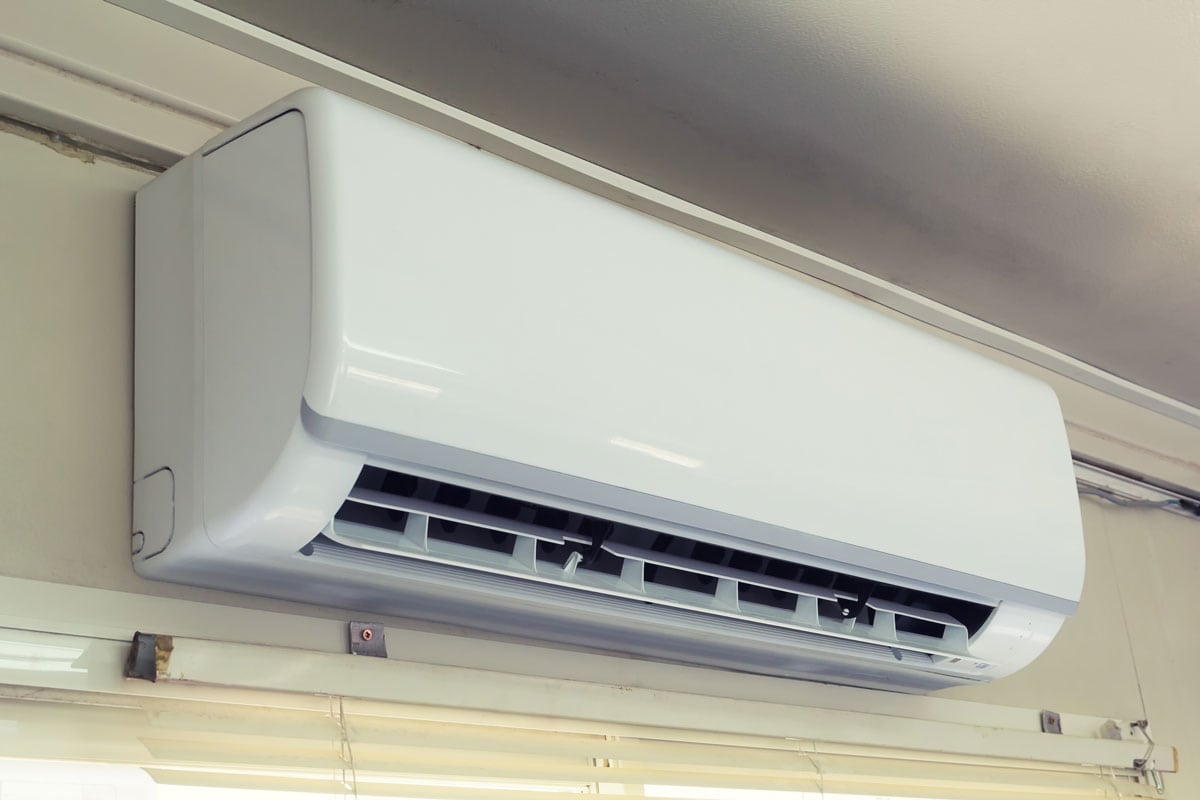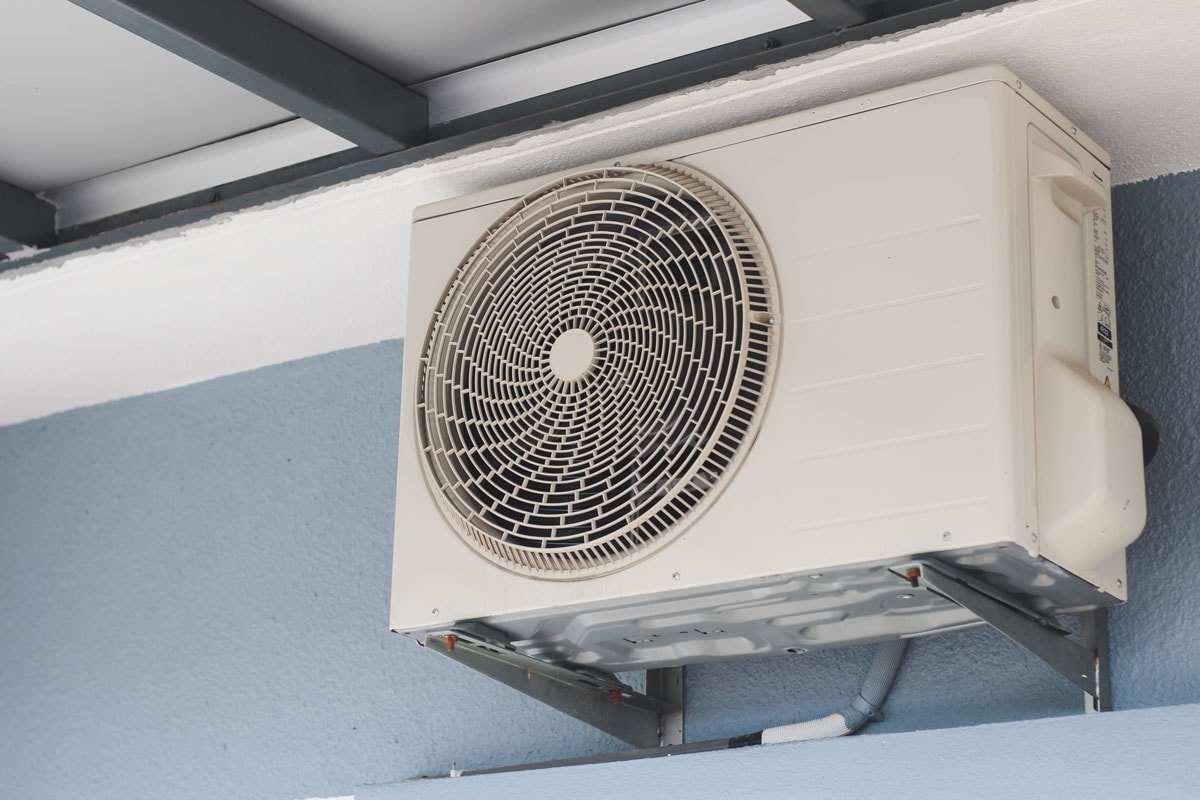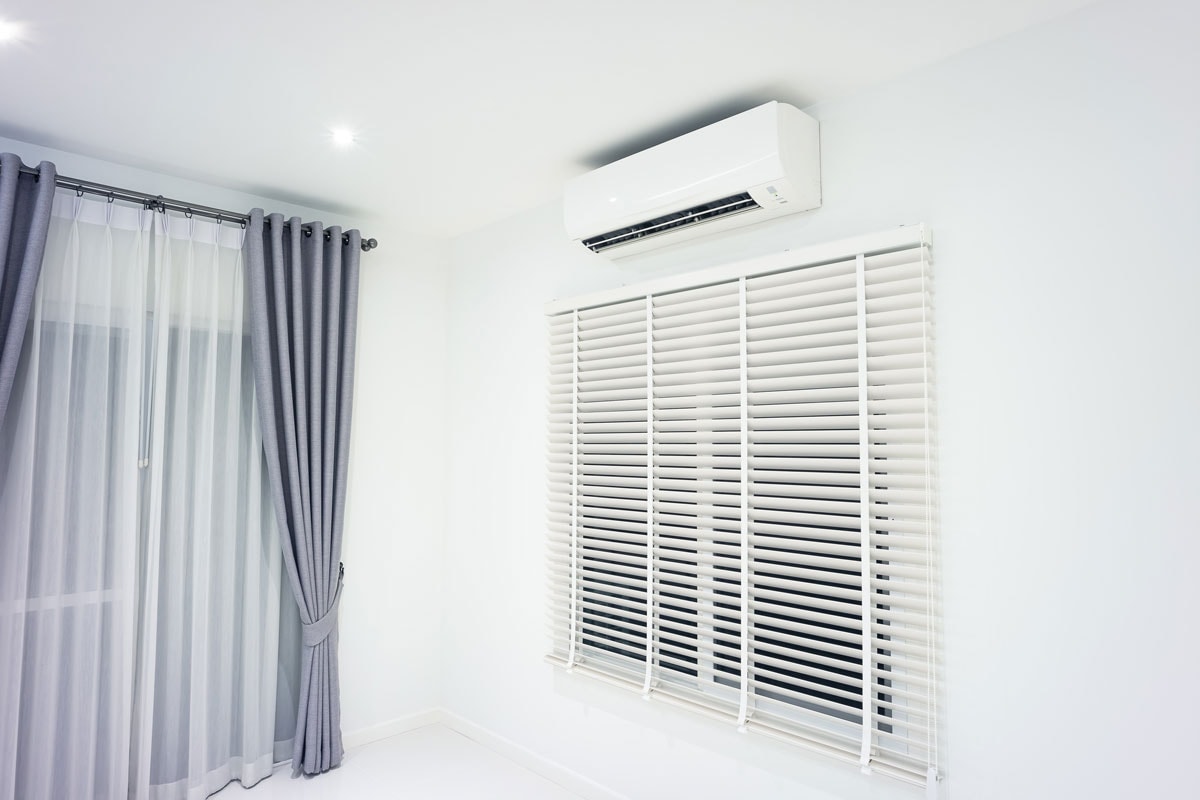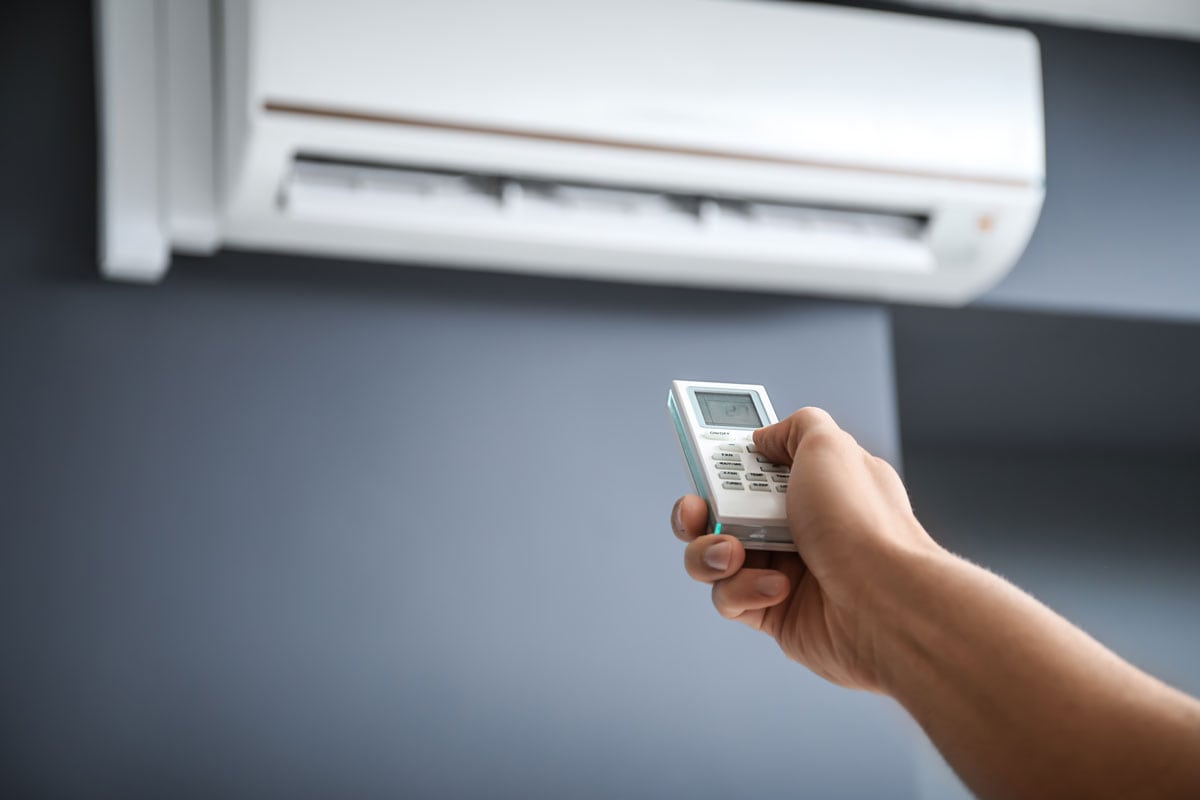During the hot and muggy summer, we utilize air conditioning units to remain more pleasant in our houses. These units are currently not even considered a luxury but a necessity.
The benefits of an air conditioner to our homes, health, and general well-being are immeasurable. But what should you do if your Chigo AC unit suddenly breaks down and needs to reset?
To overcome this issue, we conducted an extensive study.
To reset your Chigo air conditioner, you would like to conduct troubleshooting and some analysis. But first, you must identify the different error codes and what they are. And how this can help in resetting your air conditioner.
It is frustrating when one of our contemporary appliances, like the air conditioner, breaks down. We frequently attempt to resolve such issues ourselves.
What if we are unable to reset it? Where can we find trustworthy information? Continue reading as we go through the issues mentioned above in detail and offer appropriate remedies.
![Young man switching on air conditioner, Young man switching on air conditioner, How To Reset A Chigo Air Conditioner [Inc. 10 Common Error Codes]](https://hvacseer.com/wp-content/uploads/2022/08/How-To-Reset-A-Chigo-Air-Conditioner-Inc.-10-Common-Error-Codes.png)
Chigo Air Conditioner Error Codes
Checking the error number and concentrating on the issue it indicates is another simple method for solving most Chigo air conditioner issues.
Below are the different error codes for DC Inverter split type A/C:
Error Codes For CHIGO DC Inverter Split Type A/C

1.) F1 - Communication Error
Additional indication: The external LED may flicker 15 times while the indoor digital tube shows F1.
The two devices didn't exchange any data for three minutes in a row. The communication line may be loose, incorrectly connected cables between the two devices, or the voltage regulator is malfunctioning.
Troubleshooting:
- Verify the accuracy of the connection between the interior and outside device. If not, make adjustments and retest.
- Verify and tighten any loose PCB inserter parts.
- If the fuse has blown out or gone loose, check if the outdoor PCB's AC voltage is okay.
- If everything above works out as expected, replace the outside PCB.
2.) F2 - Indoor Temperature Sensor Error
In this instance, the sensor wire might be unsecured or improperly connected. Also possible is damage to the temperature sensor.
Solutions to problems:
- Examine any loose sensor wires. Identify any loose sensor wires and fix them if necessary.
- Measure the resistance. Examine the resistance of the temperature sensor (first remove it). The sensor may have problems with an open circuit, a short circuit, or an aberrant value. Even worse, the sensor could need to be replaced if damaged.
- Change the indoor PCB. Replace your indoor PCB if everything seems fine so far.
3.) F3 - Coil Temperature Home Sensor Error
Once more, the sensor wire could be frayed or seriously damaged. The temperature sensor itself may be defective, which is the second possibility.
Troubleshooting methods:
- For error code F2, repeat the procedures we have underlined.
4.) F4 - Indoor Fan Issue
After 30 seconds, this implies that the interior fan is not the source of the feedback pulse signal. As a result, the fan will stop.
Troubleshooting methods:
- Voltage output test. Start the device by turning it on. Check the output voltage at the corresponding indoor terminal. If there is no voltage, you need to replace the indoor PCB.
- Test your resistance instead. If the electrical resistance of the winding is not acceptable, remove the indoor fan's motor connection and test it; if not, probably replace the fan motor.
- If replacing the fan motor is ineffective, install a new indoor PCB.
5.) F5 - Faulty Outdoor Module
The driving circuit and the external PCB may be the source of the issue.
Troubleshooting methods:
- Verify that all contacts are in order. Now, for those devices where the main outdoor board and drive module are separate, check to see if the connection (6 cores) between them is correct and make any necessary repairs.
- Switch out the drive board. Consider changing the exterior drive board if the main board has been determined to be in good condition.
6.) F6 - An External Temperature Sensor Issue
This can be the case since the outdoor air temperature is close to or above 20 °C.
Troubleshooting techniques:
- Check to see if any sensor wires are frayed. Check if the sensor wire is loose, then repair it if necessary.
- Investigate the resistance. Ensure the temperature sensor's resistance is correct (first remove it). There may be issues with the sensor if there is an open circuit, a short circuit, or an abnormal value. Due to damage, it can even be required to replace the sensor.
- Change the indoor PCB. If everything seems to function well, swap out your outdoor PCB.
7.) F7 - Outside Coil Temperature Sensor Error
Temp of the outdoor coil. Anytime the pipe temperature outside reaches or surpasses 54°C or drops below 20°C, the sensor could have problems.
Troubleshooting methods:
- Make sure no sensor wires are loose. Like other sensor issues, a loose sensor cable may be to blame. Observe and fix if necessary.
- Examine the resistance. If this doesn't work, move on to check the temperature sensor's resistance as previously explained and replace the sensor if necessary.
- Look for any missing or damaged parts. If the sensor functions correctly, the problem can be caused by lost or broken components in the related integrity circuit. Verify each piece and replace any missing or damaged parts.
8.) F9 - Outside Coil Temperature Sensor Error
The problem frequently occurs if such compressor discharge temperature is below 0°C or above 120°C.
Troubleshooting methods:
- Re-do the F7 problem troubleshooting steps.
9.) FC - Unusual Compressor Driving
It's possible that the compressor isn't functioning correctly.
Troubleshooting methods:
- Verify the tying wire. Examine the condition of the connecting wire on the main drive board, and if required, repair or replace it.
- Examine the screws. Verify that each screw is securely fastened to the main drive board and correct any that are not.
Reminder: Avoid crushing the module when working on the screws.
- Verify the voltage. Check the drive module's input voltage to see if it is correct (check your manual for accurate input voltage). If the voltage is off, the controller needs to be replaced.
If not, you may need to replace the entire board (if there is only one board) or the drive module (for Chigo ACs, where the outdoor controller is separate from the drive module).
10.) FF - Issues With Various Chigo Air Conditioners

If the error code FF displays on your split Chigo air conditioner, you may also be dealing with one of the other problems listed below.
- Excessive quantities of refrigerant. Your appliance could malfunction if it doesn't have enough refrigerant inside. If the weld is leaking (or blocked weld), this is a hazardous concern. An additional sign is decreased pressure across the entire system.
- If the refrigerant seems to be in excellent condition, inspect to determine whether the four-way valve is faulty and change it as necessary.
- Faulty PCB. Replace the PCB with sufficient refrigerant, and the valve appears in good shape.
Chigo Air Conditioner Do's And Don'ts

DO: Follow the manual's instructions for routine maintenance to keep the air conditioner in good working order for as long as feasible.
DO: Always turn off the unit's power supply before doing any Chigo air conditioning maintenance procedures.
Don'ts: Prevent activating the compressor repeatedly, at most five times per hour, since this can shorten the air conditioner's lifespan.
Don'ts: Avoid using solvents like benzene when cleaning the entire unit, as they may result in button malfunction or discoloration.
We should also note that wetting a towel or cloth using water or a balanced cleaning chemical is the only way to clean it properly.
Other Frequent Fault Detection
The list of typical problems some individuals have with their Chigo AC is presented below, along with troubleshooting steps for each.
Your AC's Compressor Shuts Off Sporadically
- You should clean the compressor, and it is advised every summer.
- Check the coolant level before adding refrigerant and top it off. If uncertain about the steps, you may wish to see a professional.
- Check and adjust the thermostat's settings as necessary. Look inside the device for debris, clean the wiring, and check and repair the thermostat's internal components, if required.
Not Starting On Chigo Air Conditioner
- It's time to replace the fuse.
- Change the controller or the batteries.
Note: On occasion, following a power loss, the machine won't operate since the data has been reset. Try starting it with the remote control if this occurs to you; it frequently works.
No Heat In A Chigo Air Conditioner
- If the doors and windows haven't been shut, do so now.
- Check for leaks and adequately charge the coolant if it leaks or not enough.
Remember that this might also occur if the outside temperature is below a specific threshold.
Your Chigo AC Has Regular Airflow But Isn't Cooling Properly
- Correctly modify the temperature.
- Clean the heat exchanger on the appliance.
- Clean the air filter by removing it.
- Lock any windows and doors that are left open.
- Install drapes to block the sun's rays.
- Streamline the heat at the source.
- Verify for leaks and adequately recharge the refrigerant.
Check out this Chigo Portable Air Conditioner on Amazon.
Conclusion

In addition to the problem codes listed above, there are additional codes for several Chigo air conditioner models, including the wall split AC series, the inverter single split series air conditioner, the floor standing AC, and the portable air conditioner.
The failure code manual contains the error codes for each of them.
Another thing to remember is that numerous models from this company, such as Chigo portable AC units, share the same error codes, so you should try the following troubleshooting steps before considering calling in a professional.
Always refer to your manual because it has all the information.
Here are some related posts that you may want to read:

